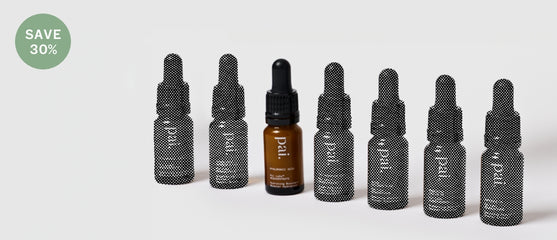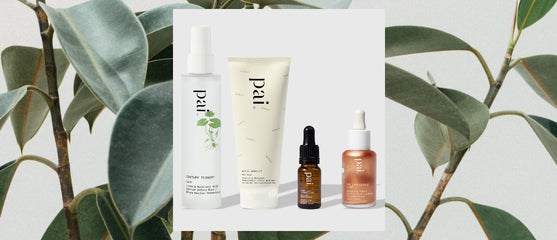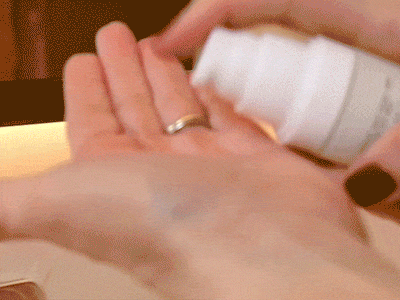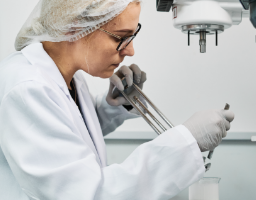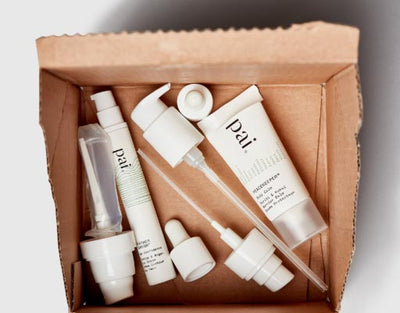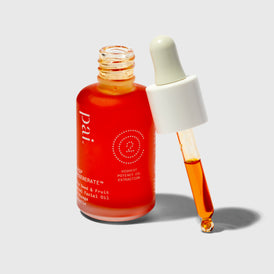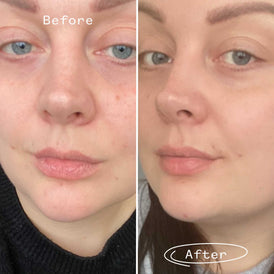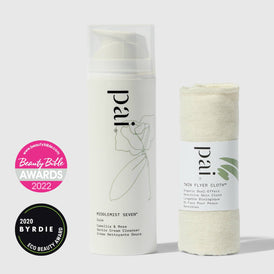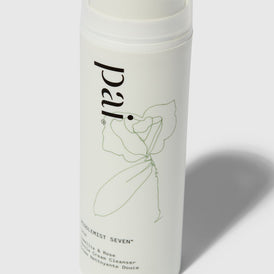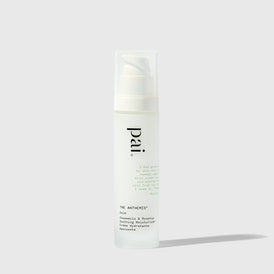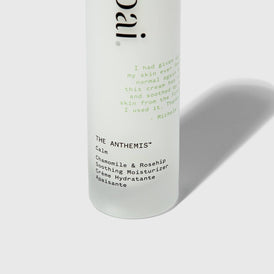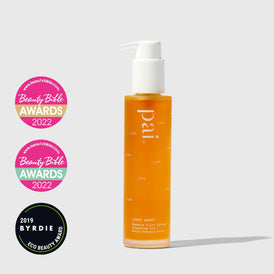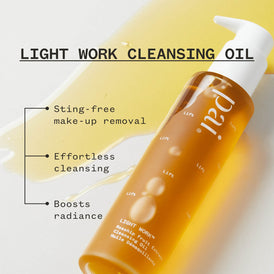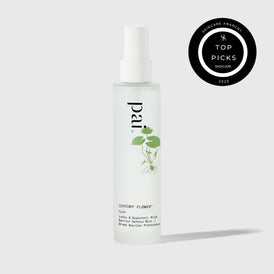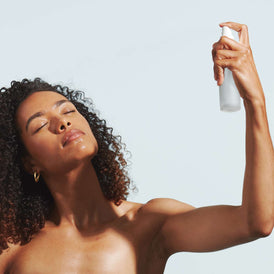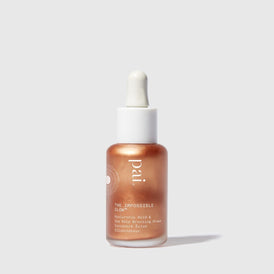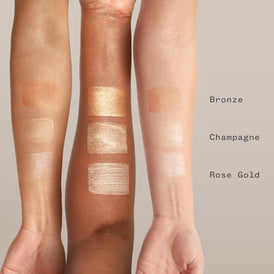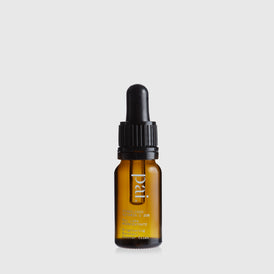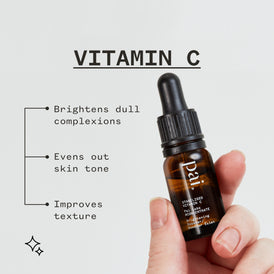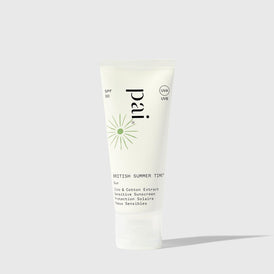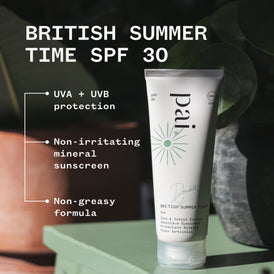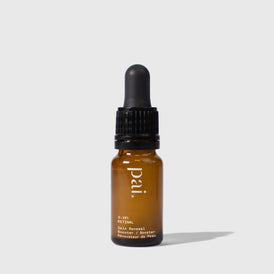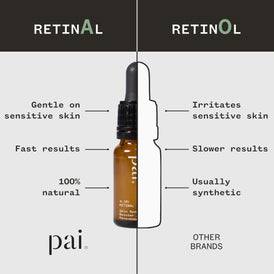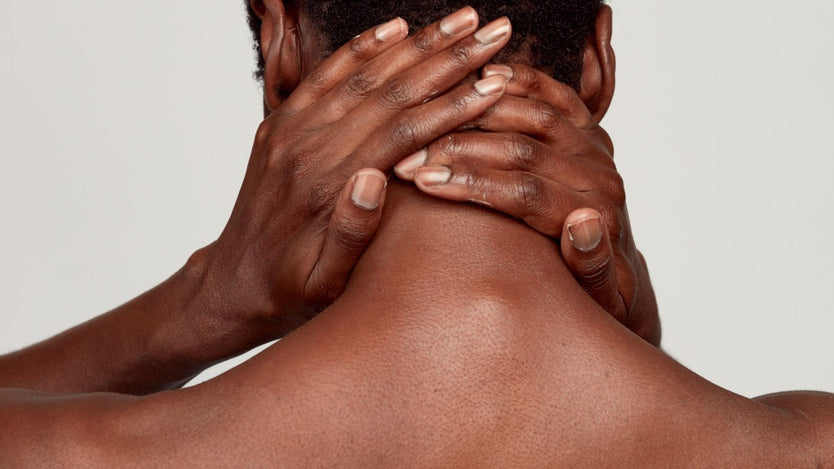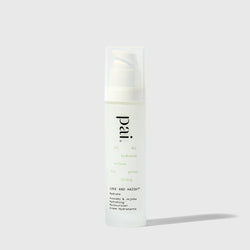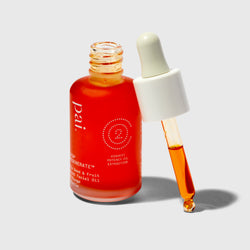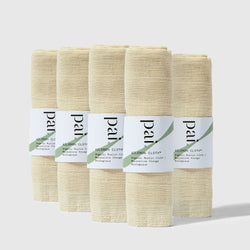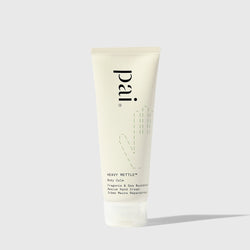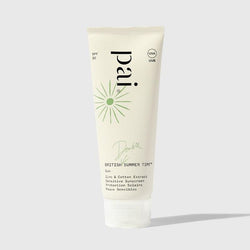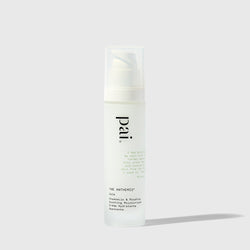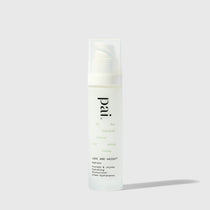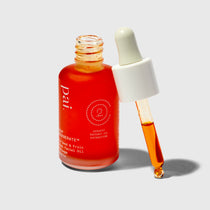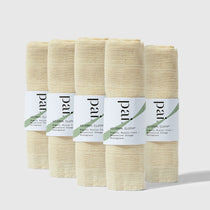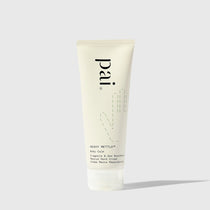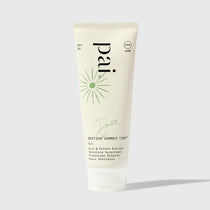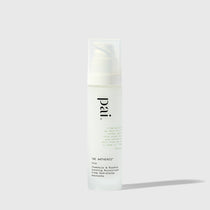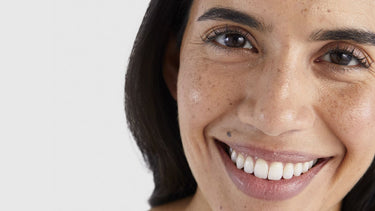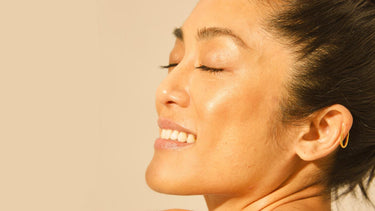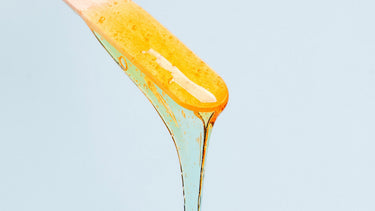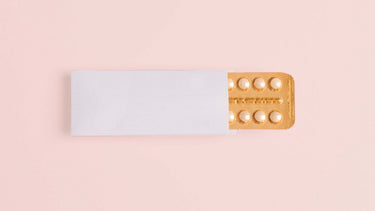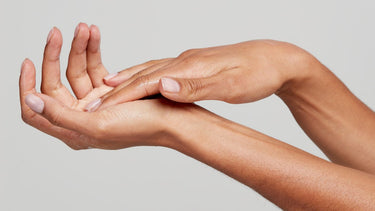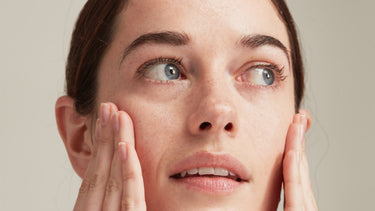While Breast Cancer Awareness campaigns are incredibly valuable in spreading the word on knowing, and looking for, the symptoms for early diagnosis (not to mention removing any hesitancy in seeking help), for the many women going through treatment, advice and practical information is what they really need.
While we’d always suggest you consult your breast cancer nurse or oncologist with any questions you have, big or small - we can share advice on how to manage the changes in your skin.
Here’s your need-to-know guide on what to expect during treatment, the ingredients to avoid and what to use to soothe any sensitivity.

How cancer treatment affects the skin
Your skin changes and responds with every stage and type of treatment. Not everyone’s skin will do this the same way, but there are some changes that many cancer patients will have in common, such as hypersensitivity. Cancer treatments, from surgery, radiation therapy and chemotherapy to drugs such as daunorubicin (Cerubidine and DaunoXome) and Ixempra (ixabepilone) will all take a toll on the skin – after all, it is the body’s largest organ.
From dehydration to hot flushes and redness, here’s how different treatments might play out on your skin.
Surgery
Depending on your type of cancer, you may have to undergo a surgical procedure at some point during your treatment – whether it be a lumpectomy or mastectomy. After surgery, skin is obviously very sore and tender.
While it can be tempting to ease the discomfort, resist the urge to apply anything at all to your scar until it is fully sealed. Once it has, you can use products that encourage the skin to heal and help improve the appearance of any scarring.
Chemotherapy
One of the main side effects of chemotherapy is extreme dryness. Many cancer patients find that their skin becomes chronically dry and dehydrated – and can be very flaky, particularly on the face. Although less common, another side effect may be photosensitivity.
Radiation
Radiation treatment can have the most direct effect on the skin, causing it to become very tender. Temporary redness and hyperpigmentation can also occur in the area affected. During radiation, your doctor will strongly advise you to use certain products (aqueous cream), and for good reason – as they can’t be aware of the ingredients in any number of alternative products you might be tempted to use.
Post-treatment
As drugs continue after treatment, so can their effects on the skin. The most common ongoing complaints are hot flushes and redness, which are often likened to menopausal symptoms. Some women even find their complexions look great once they’ve recovered, often because they’re paying better attention to their skin and diet than before.


Ingredients to avoid during cancer treatment
Many women turn to Pai during treatment, as our certified organic status means that our products are guaranteed to be free of many of the ingredients they’re trying to avoid. These ingredients, some of which are in the list below, are the subject of ongoing research – and some people choose to take a precautionary approach and avoid them to be on the safe side.
While it’s not necessary to know what every single ingredient in your products is, there are a handful to keep an eye out for when you’re shopping for beauty products, including:
Detergents & alcohol (e.g. SLS & Alcohol Denat)
While everyone’s skin reacts differently to treatment, one of the most common effects of chemotherapy in particular is extremely dry and delicate skin. Detergents (e.g. Sodium Lauryl Sulphate, or SLS, usually found in foaming products) and Alcohol (e.g. Alcohol Denat) over-strip the skin of its natural oils and so exacerbate dry and distressed skin.
As detergents are alkaline, they can also disrupt the skin’s natural pH – causing skin to become unbalanced and unpredictable. Alcohol acts in much the same way, and is usually found in natural creams and toners. It is also an irritant – and can cause redness particularly in the cheeks.
Parabens (e.g. Methylparaben)
While the jury’s still out on parabens, they are thought by some to be hormone disruptors and oestrogen mimickers – so worth avoiding if your cancer is oestrogen responsive.
Fragrance (e.g. Parfum)
The term “Parfum” can be used as an umbrella to cover hundreds of potentially harmful chemicals and irritants. Phthalates in particular, the ingredient which fixes scent, is thought to be a potential oestrogen mimicker.
Petrochemicals (e.g. Petroleum Jelly)
Petrochemicals such as Paraffinum Liquidum are used as a moisture barrier in lip balms, moisturisers and oils specifically for scarring. The EU classes petroleum as a carcinogen and limits its use, but as it’s in so many of the products we use throughout the day it may be best avoided altogether – particularly in products we’re ingesting such as lip balm or lipsticks.
Formaldehyde
Several common preservatives in skincare are known to release formaldehyde. Avoid things like Sodium Hydroxymethylglycinate, DMDM hydantoin, and Diazolidinyl Urea. Try and read your ingredients list to look out for these, and if there’s anything you don’t recognise or don’t like the sound of – do a bit of research into it or drop us a line.
Products we recommend during and after treatment
For scarring
When it comes to scarring, combining skin hydration with skin regeneration is key. To do this, hydrate from the inside and out by regular moisturising with a high water content cream, drinking plenty of water and taking a good omega supplement. Mix your cream with a few drops of a regenerative oil to accelerate skin healing; Rosehip Bioregenerate Oil is excellent for scars and is 100% natural.

For dryness
Extreme dehydration and dryness from chemotherapy for example can immediately show on your skin. So if you can stomach it, drink more water. Don’t underestimate the power of water and hydration from the inside out. Keep a gentle moisturiser with you in your bag at all times to apply throughout the day. Choose one with a high water content (with ‘aqua’ first on the ingredients list), or carry a hydrating facial mist to spritz over or underneath make-up.
Swap foaming products for cream cleansers, and opt for a bath oil rather than a bubble bath, to cut down on detergent exposure.
Gentle exfoliation will also help with dryness. Removing flaky skin cells at the surface will allow the healthy cells underneath to absorb products where they’re needed most. Use a very gentle exfoliator or a muslin cloth.
Finally, carry hand cream and lip balm with you, as these delicate areas can become particularly sensitive, cracked or sore.
For photosensitivity
To help with treatment-triggered photosensitivity, wear a natural SPF if you’re out in strong sunlight – our British Summer Time SPF30 is formulated with sensitivity in mind. Mineral make-up containing natural SPF is also a good alternative for daily protection.
After some time has passed since radiation therapy, and the tender skin has begun to heal, encouraging it to regenerate is key. A concentrated oil like Rosehip is perfect for this as it contains Omegas 3, 6, 7 & 9 – the building blocks of healthy skin. Treat this thinner, distressed skin just as you would a scar – mixing oil with a hydrating cream for maximum nourishment.
For hot flushes
To deal with drug treatment-induced hot flushes, temperature is key, so while it may sound obvious, try to avoid overheating the house or sitting out in the sun. Wear light cotton garments next to the skin and layer clothes so they can be easily removed. Look for products that contain anti-inflammatories as these will help instantly cool and calm the skin.
Chamomile and Aloe creams are particularly great, or you might like to use a facial spritz instead. Over time, using regenerative products like Rosehip will help strengthen the skin and make flushes less likely.
Tips for reading ingredients
Lastly, a note on shopping for skincare products post-cancer treatment more generally. The shorter the ingredients list the better. Ingredients are listed in order of proportion, so always concentrate on the top half, as these ingredients will make up the large majority of the product. Look for something natural or organic with a certification mark – the Soil Association/COSMOS is the gold standard.
Organic ingredients in a product are marked with stars, so the more stars on an ingredients list, the better. Look for the words ‘gentle’, ‘nourishing’ and ‘soothing’ and avoid anything over-stimulating or energising - you want skincare that’s designed for sensitive skin, using ingredients you can recognise (like Aloe or Chamomile).
While we aren’t medical professionals, and really do recommend you speak to yours about your skin if you have any concerns, we are here to help.
If you’ve got any questions or would like tailored tips for your skin’s specific needs right now, our skincare coaches offer free online skincare consultations via phone or video chat. A totally non-pushy, no pressure to buy service, we want to help you feel good, comfortable, and like yourself again.
